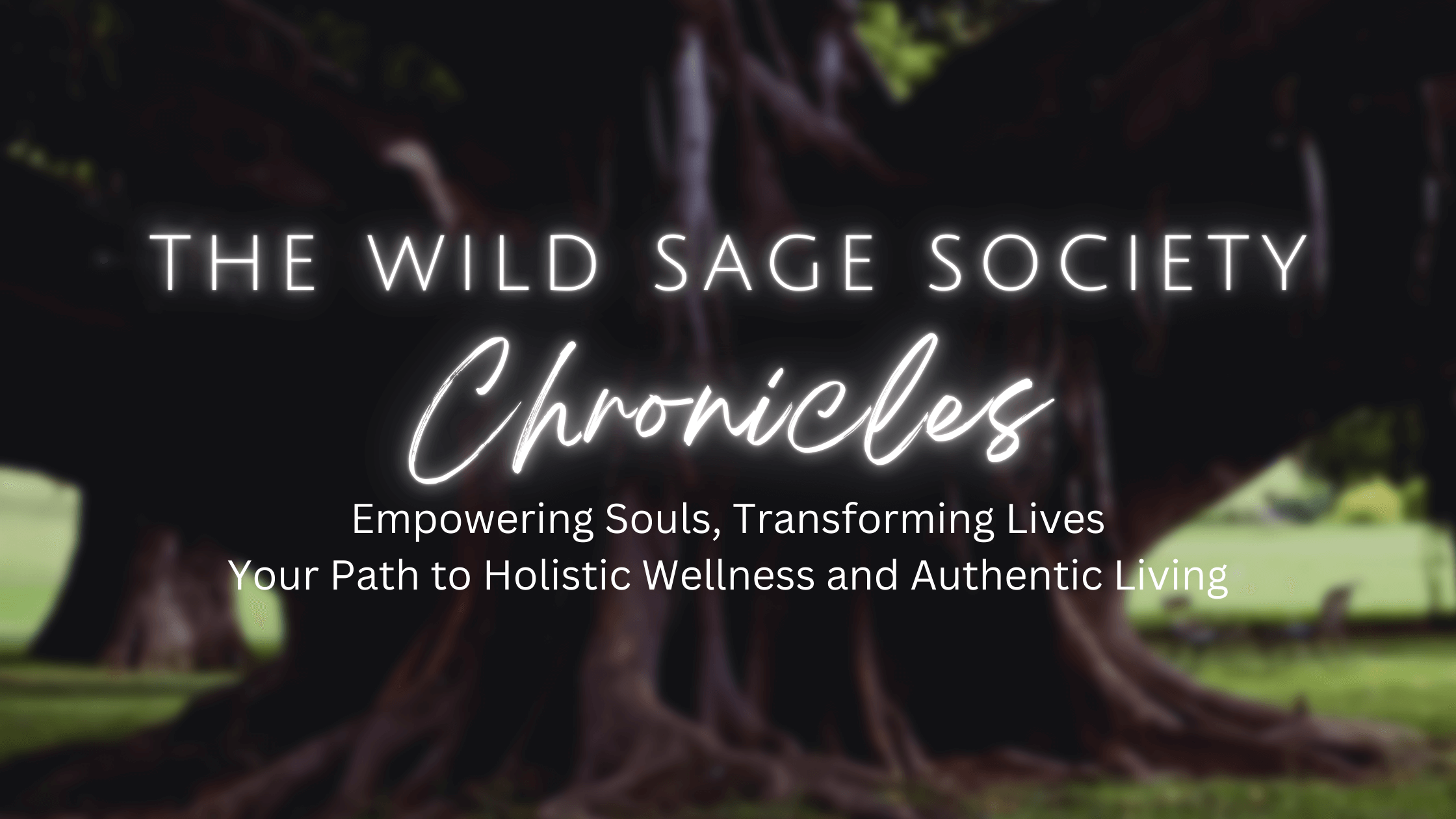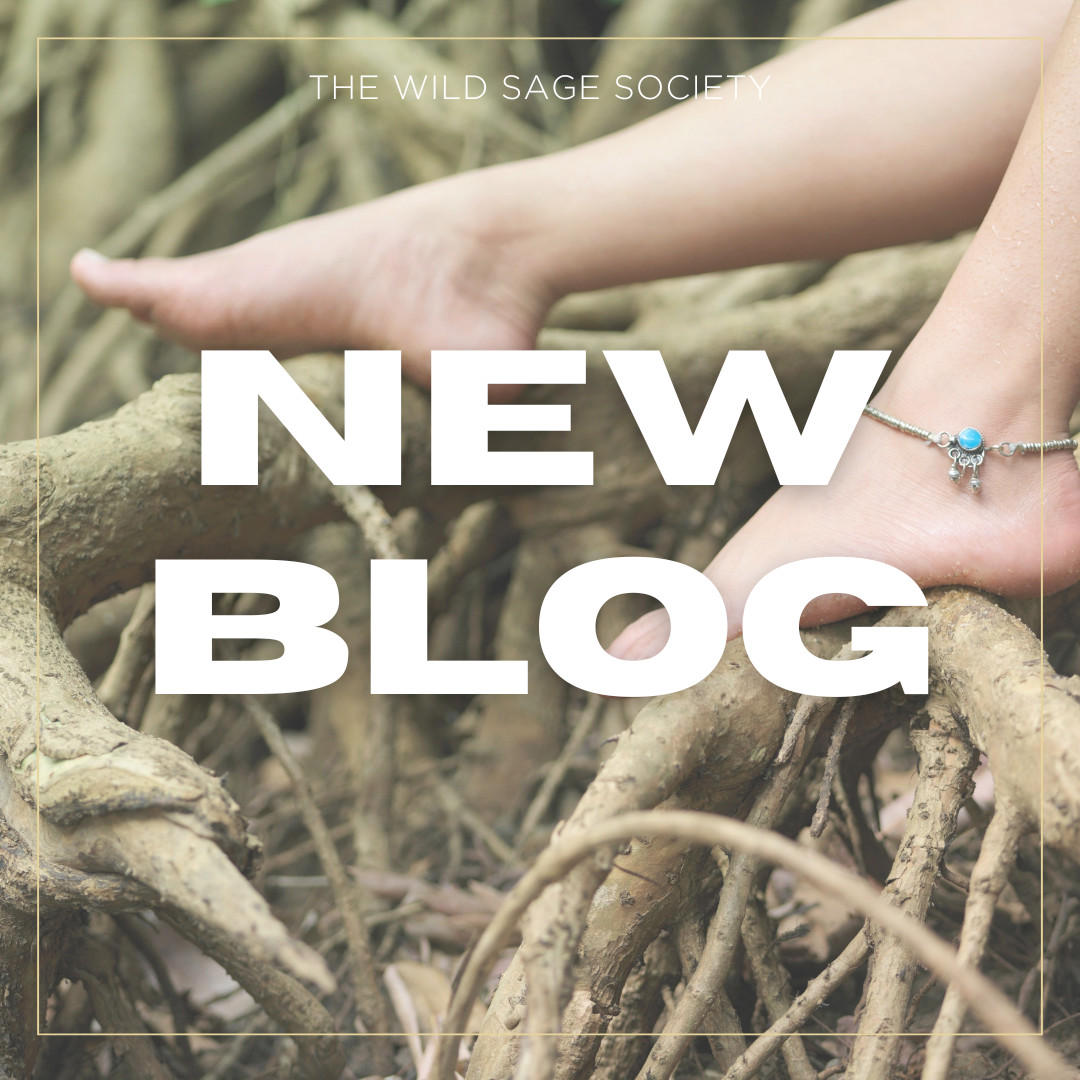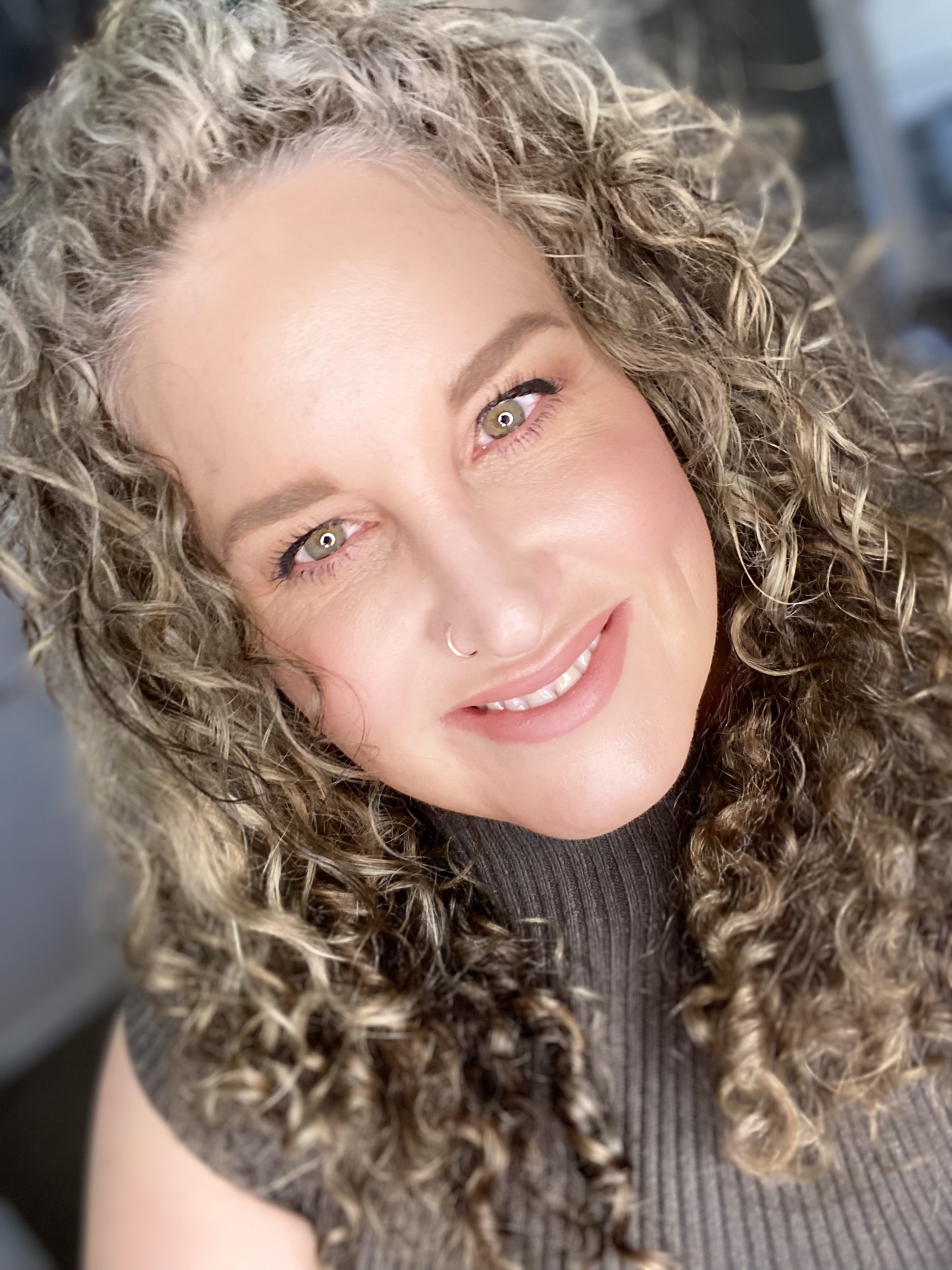Breaking the Cycle: How Negative Thought Patterns and Isolation Keep You Stuck in Fear-Based Thinkin

Breaking the Cycle: How Negative Thought Patterns and Isolation Keep You Stuck in Fear-Based Thinking
The Silent Struggle of Isolation and Negative Thinking
For years, Mary thought she was simply an overthinker. She analyzed every situation from every possible angle, replayed past conversations in her mind, and feared she was always saying or doing the wrong thing. At the same time, she began pulling away from friends and social interactions—partly because she feared judgment, partly because she felt like no one truly understood her.
What started as self-protection turned into self-isolation.
Instead of breaking free from the anxiety that haunted her, Mary became trapped in a cycle of negative thought patterns and lack of social connection—two of the biggest reinforcers of fear-based thinking.
This is a reality for so many people navigating anxiety and self-doubt. The more we listen to our fear-based thoughts, the more we withdraw. And the more we withdraw, the harder it is to break free from those very thoughts.
But the good news? You can rewire your mind and reconnect to the world again.
Today, we’ll explore:
✔ How negative thought patterns reinforce anxiety and fear-based decisions
✔ The link between social disconnection and stress
✔ Mary’s transformational journey from self-isolation to confidence
✔ Science-backed strategies for rewiring negative thought loops and rebuilding connection
✔ How negative thought patterns reinforce anxiety and fear-based decisions
✔ The link between social disconnection and stress
✔ Mary’s transformational journey from self-isolation to confidence
✔ Science-backed strategies for rewiring negative thought loops and rebuilding connection
The Science of Negative Thought Patterns & Social Isolation
Why Negative Thought Loops Keep You Stuck
Your brain is constantly interpreting the world based on past experiences and thought patterns. When negative thinking dominates your internal dialogue, your brain creates a cognitive bias—meaning you unconsciously look for evidence to confirm those negative thoughts.
- Example: If you believe people don’t like you, you’ll focus on moments that reinforce that belief (a text left on read, someone forgetting to invite you somewhere) and ignore any signs to the contrary.
- Example: If you think you’re going to fail, your brain will focus on past mistakes instead of successes, reinforcing inaction.
The Isolation-Anxiety Loop
Humans are wired for connection. But when we’re overwhelmed with anxiety and self-doubt, we often isolate ourselves. Unfortunately, the more disconnected we become, the worse our fear-based thinking gets.
✔ Social disconnection increases cortisol (the stress hormone), keeping the body in fight-or-flight mode.
✔ Lack of social support reinforces the belief that "I'm alone in this," deepening negative self-perception.
✔ Without external feedback, negative thought loops spiral unchecked.
✔ Lack of social support reinforces the belief that "I'm alone in this," deepening negative self-perception.
✔ Without external feedback, negative thought loops spiral unchecked.
This is what happened to Mary. As she pulled away from social settings, she lost the support and perspective that could have helped her challenge her fears.
Case Study: Mary’s Journey from Isolation to Confidence
Mary joined private 1:1 coaching and hypnosis after spending years trapped in self-doubt. She constantly worried about how others perceived her, overanalyzed social interactions, and convinced herself that people didn’t want her around.
She knew she wanted to reconnect—to people, to joy, to a sense of ease within herself—but every time she tried, her fear-based thinking would pull her back.
Through deep mindset work, nervous system regulation, and hypnosis, Mary learned:
✔ How to challenge the cognitive distortions fueling her anxiety.
✔ How to reconnect with safe, supportive people instead of isolating.
✔ How to trust herself and others again.
✔ How to challenge the cognitive distortions fueling her anxiety.
✔ How to reconnect with safe, supportive people instead of isolating.
✔ How to trust herself and others again.
Her biggest breakthrough? Learning that her thoughts were not facts.
By rewiring her brain for confidence and connection, Mary was able to rebuild relationships, trust herself in social settings, and break free from the fear that had once dictated her every move.
How to Break Free from Negative Thought Patterns & Social Isolation
Like Mary, you can shift from self-doubt to self-trust, from isolation to connection. Here’s how:
1️⃣ Rewire Your Negative Thought Loops
Negative thought patterns can be unlearned. Your brain is constantly forming new neural connections—so the more you challenge limiting beliefs, the weaker they become.
💡 Try This:
- Name your negative thought. Example: “Nobody likes me.”
- Ask yourself: Is this fact or fear? What evidence do I have?
- Reframe it. Example: “I am loved, and I am working on building deeper connections.”
➡ Action Step: Write down one recurring negative thought and practice challenging it daily.
2️⃣ Reconnect with Safe Social Spaces
Fear makes us believe that withdrawal is safety. But true safety comes from connection.
💡 Try This:
- Start small. Reach out to one supportive person instead of forcing big social outings.
- Join a group aligned with your interests. Community heals isolation.
- Practice receiving. Let people show up for you instead of assuming they won’t.
➡ Action Step: Identify one way to reconnect this week—whether it’s a conversation, a support group, or an event.
3️⃣ Regulate Your Nervous System in Social Settings
If social situations trigger your fight-or-flight response, your nervous system needs reassurance that you’re safe.
💡 Try This:
- Before a social event, step into sunlight, take deep breaths, and ground yourself.
- During interactions, focus on body language and facial expressions instead of anxious thoughts.
- After, reflect on positive moments instead of analyzing perceived mistakes.
➡ Action Step: Practice one grounding technique before your next social interaction.
Your Next Step: Join the From Fear to Freedom Masterclass
If you’ve been struggling with negative thought patterns and social disconnection, you don’t have to navigate it alone.
🔥 Join the FREE From Fear to Freedom Masterclass on April 22, 2025, and learn how to:
✔ Rewire your mind to break negative thought loops
✔ Rebuild confidence and trust in yourself
✔ Overcome fear-based isolation and reconnect with ease
✔ Rewire your mind to break negative thought loops
✔ Rebuild confidence and trust in yourself
✔ Overcome fear-based isolation and reconnect with ease
🎁 BONUS: Exclusive self-hypnosis session for deep subconscious healing!
👉 Reserve Your Spot Now
Final Thoughts: You Are Not Alone
Fear convinces us that we are alone, that we are unworthy, that things will never change.
But the truth? Your thoughts are not facts.
By rewiring your mind and reconnecting with supportive people, you can break the cycle of anxiety, fear-based thinking, and isolation—just like Mary did.
🚀 Let’s do this together.
Join the From Fear to Freedom Masterclass today.

Breaking Free from Fear-Based Thinking: How Chronic Anxiety and Depression Keep You Stuck
Living in a Loop of Fear-Based Thinking
For years, Andrea believed that anxiety was simply a part of who she was. She constantly second-guessed herself, avoided making big decisions, and overanalyzed every possible outcome. It wasn’t just indecision—it was a constant state of fear-based thinking, a loop that kept her feeling stuck, overwhelmed, and exhausted.
Like many others, Andrea had learned to live in survival mode. Her nervous system was always on high alert, and she struggled to trust herself, her instincts, and her ability to create real change in her life.
She wasn’t alone.
Fear-based thinking, fueled by chronic anxiety and depression, is more than just over-worrying—it’s a neurological and physiological response that traps us in a cycle of hesitation, avoidance, and stress.
But here’s the good news: this cycle can be broken.
Today, we’ll explore:
✔ The science behind fear-based thinking and chronic stress
✔ How anxiety & depression keep you stuck in survival mode
✔ Andrea’s transformational journey from fear to freedom
✔ Proven strategies for rewiring your brain for clarity, confidence, and peace
✔ The science behind fear-based thinking and chronic stress
✔ How anxiety & depression keep you stuck in survival mode
✔ Andrea’s transformational journey from fear to freedom
✔ Proven strategies for rewiring your brain for clarity, confidence, and peace
The Science of Fear-Based Thinking & Chronic Stress
Why Does Anxiety Keep Us Stuck?
Fear-based thinking isn’t just an emotional habit—it’s a biological response. When you experience chronic anxiety or depression, your brain becomes wired to operate in survival mode, meaning:
- Your amygdala (fear center) is hyperactive, making you more reactive and prone to panic.
- Your prefrontal cortex (logic & reasoning) is suppressed, making it harder to think clearly and make decisions.
- Your nervous system stays in fight-or-flight mode, keeping your body in a heightened state of stress.
This isn’t just about “negative thinking.” It’s a deep-rooted physiological loop that reinforces itself over time. The longer you stay in chronic stress, the harder it becomes to trust your own decisions, break free from fear, and move toward what you truly want.
Common Signs You’re Stuck in Fear-Based Thinking:
✔ Overanalyzing every choice but never acting
✔ Feeling paralyzed by what could go wrong
✔ Seeking constant reassurance before making decisions
✔ Letting self-doubt overpower your desires
✔ Struggling to relax, even in safe situations
✔ Overanalyzing every choice but never acting
✔ Feeling paralyzed by what could go wrong
✔ Seeking constant reassurance before making decisions
✔ Letting self-doubt overpower your desires
✔ Struggling to relax, even in safe situations
Case Study: Andrea’s Journey from Fear to Freedom
For most of her life, Andrea felt like a passenger in her own mind. Her inner dialogue was full of “What if?”
- What if I fail?
- What if people judge me?
- What if I make the wrong decision and regret it forever?
She avoided risks, stayed in relationships that drained her, and hesitated to make changes in her business—even when she knew they were necessary.
When Andrea began her private 3-month 1:1 coaching and hypnosis journey, she wasn’t looking for a quick fix. She had already spent years exploring traditional therapy, self-help books, and meditation apps, yet she still felt deeply disconnected from herself.
Through a combination of nervous system regulation, subconscious reprogramming, and somatic healing techniques, she began to understand that her fear wasn’t her fault—but it was something she could change.
✔ She learned how her past experiences shaped her fear responses.
✔ She practiced simple but powerful tools to calm her nervous system.
✔ She discovered how to rewire her brain for clarity and confidence.
✔ She practiced simple but powerful tools to calm her nervous system.
✔ She discovered how to rewire her brain for clarity and confidence.
Within weeks, Andrea noticed a shift. She wasn’t just thinking differently—she was feeling different. Decisions became easier. Her body felt lighter. The fear that once ruled her mind no longer had control.
How to Break the Cycle of Fear-Based Thinking
Just like Andrea, you can shift from fear to freedom. Here’s how:
1️⃣ Calm Your Nervous System First
When you’re stuck in chronic anxiety or depression, your body is constantly in a state of fight-or-flight. Before you can change your thoughts, you need to signal to your brain that you are safe.
💡 Try This: Step outside, take a couple of slow, deep breaths, and let the sunlight hit your skin. Then, walk barefoot on the grass for a few moments, feeling the ground beneath you. This simple practice helps reset your nervous system, regulate your circadian rhythm, and bring you back to the present moment.
➡ Action Step: Each morning, take a few minutes to breathe, soak up sunlight, and connect with the earth—a small but powerful way to calm your body and mind.
2️⃣ Shift Your Inner Dialogue
Your brain believes the stories you tell it. If your thoughts are full of self-doubt, fear, and worst-case scenarios, that’s the reality your mind will reinforce.
💡 Try This:
- Journaling Prompt: Write down a fear-based thought and then reframe it as a possibility.
- Example: “What if I fail?” → “What if this turns out better than I expected?”
- Mantra for the Week: “I trust myself. I trust my decisions. I am safe to move forward.”
➡ Action Step: Start catching yourself in fear-based thoughts and reframe them with curiosity instead of judgment.
3️⃣ Take Small, Safe Risks
One of the best ways to break the fear-based cycle is to prove to your brain that taking action is safe.
💡 Try This:
- Take one small step daily that challenges fear.
- Example: If you fear public speaking, practice talking on video for 30 seconds.
- Celebrate small wins (your brain needs positive reinforcement!).
➡ Action Step: Identify one area where fear holds you back and take one small step forward this week.
Your Next Step: Join the From Fear to Freedom Masterclass
If you recognize yourself in Andrea’s story, this is your invitation to step out of fear and into confidence.
🔥 Join the FREE From Fear to Freedom Masterclass on April 22, 2025, and learn how to:
✔ Rewire your brain for clarity & confidence
✔ Calm your nervous system & break the fear cycle
✔ Make fearless decisions & trust yourself again
✔ Rewire your brain for clarity & confidence
✔ Calm your nervous system & break the fear cycle
✔ Make fearless decisions & trust yourself again
🎁 BONUS: Exclusive self-hypnosis session for deep subconscious healing!
👉 Reserve Your Spot Now
Final Thoughts: You Are Not Your Fear
Fear-based thinking might have shaped your past, but it doesn’t have to define your future.
By calming your nervous system, shifting your inner dialogue, and taking small, intentional steps forward, you can rewire your brain for clarity, confidence, and true freedom.
Like Andrea, you are capable of breaking free from fear. The only question is—are you ready to take the first step?
🚀 Let’s do this together. Join the From Fear to Freedom Masterclass today.

Living in a Constant State of Stress
Have you ever felt like your mind never stops racing? Like no matter how much you rest, you still wake up exhausted, your body tense, and your thoughts clouded with worry?
You’re not alone. Chronic stress is silently wreaking havoc on millions of people’s health, especially women navigating midlife transitions, hormonal fluctuations, career shifts, and personal growth challenges.
Stress itself isn’t the problem—our bodies are designed to handle short bursts of it. But when stress becomes constant, it leads to anxiety, brain fog, decision paralysis, and long-term health risks.
If you’ve been stuck in cycles of exhaustion, indecision, and overwhelm, keep reading. Today, we’re diving into:
✔ The science behind chronic stress and high cortisol
✔ How stress rewires your brain, keeping you trapped in fear-based thinking
✔ Proven tools for regulating your body’s stress response
✔ A transformational opportunity to break free from stress in our From Fear to Freedom Masterclass
✔ The science behind chronic stress and high cortisol
✔ How stress rewires your brain, keeping you trapped in fear-based thinking
✔ Proven tools for regulating your body’s stress response
✔ A transformational opportunity to break free from stress in our From Fear to Freedom Masterclass
The Science of Chronic Stress & Cortisol Overload
What is Cortisol?
Cortisol is your body’s primary stress hormone, responsible for activating your fight-or-flight response in moments of perceived danger. It plays an essential role in survival—but when stress becomes chronic, your body continuously produces cortisol, leaving you stuck in high alert mode.
The Effects of Chronic Cortisol Overload
When cortisol levels stay elevated for extended periods, the consequences ripple through your entire body and mind:
- Decision Paralysis – Overanalyzing every choice, unable to move forward
- Emotional Instability – Mood swings, increased anxiety, and heightened reactivity
- Brain Fog & Forgetfulness – Struggling to focus, recall details, and stay organized
- Sleep Disruption – Tossing and turning at night, waking up exhausted
- Increased Cravings – Seeking sugar, caffeine, or junk food for quick energy boosts
Long-term cortisol imbalance doesn’t just make you feel off—it contributes to hormonal imbalances, weakened immunity, digestive issues, weight gain, and chronic fatigue.
How High Cortisol Hijacks Your Decision-Making & Keeps You Stuck
When stress dominates your life, your brain shifts into survival mode, prioritizing immediate reactions over logical, forward-thinking decisions.
Here’s what happens:
✔ Your Amygdala (Fear Center) Becomes Hyperactive → Making you more reactive and prone to anxiety
✔ Your Prefrontal Cortex (Logic Center) Gets Suppressed → Making it harder to think critically and problem-solve
✔ Your Nervous System Stays in a Constant Fight-or-Flight State → Keeping you on edge, exhausted, and indecisive
✔ Your Prefrontal Cortex (Logic Center) Gets Suppressed → Making it harder to think critically and problem-solve
✔ Your Nervous System Stays in a Constant Fight-or-Flight State → Keeping you on edge, exhausted, and indecisive
This results in fear-based thinking patterns, such as:
🚨 Overanalyzing decisions because you don’t trust yourself
🚨 Procrastinating due to overwhelm
🚨 Avoiding necessary choices out of fear of failure
🚨 Procrastinating due to overwhelm
🚨 Avoiding necessary choices out of fear of failure
The good news? This cycle CAN be broken. Let’s explore how.
3 Proven Ways to Lower Cortisol & Reclaim Mental Clarity
1️⃣ Engage in Nervous System Regulation
When your nervous system is dysregulated, shifting out of stress feels nearly impossible. The key is to activate your parasympathetic nervous system (rest & digest mode) so your body can restore balance.
Try This: Resource State Anchoring
- Place your hand on your heart.
- Take a deep breath in for 4 seconds, hold for 2, and exhale for 6.
- Visualize a moment of peace or happiness and allow your body to fully experience that feeling.
This signals to your brain: “I am safe.”
💡 Action Step: Set a 5-minute timer and practice this technique daily.
2️⃣ Reset Your Thought Patterns with Small Actions
Fear-based thoughts reinforce stress patterns, keeping you trapped in cycles of inaction and self-doubt. To break the cycle, start with:
🔹 Journaling a fear-based thought and rewriting it from a neutral perspective.
🔹 Taking one small action to prove to your brain that you are in control.
🔹 Moving your body (walking, stretching, dancing) to shift stagnant energy.
🔹 Taking one small action to prove to your brain that you are in control.
🔹 Moving your body (walking, stretching, dancing) to shift stagnant energy.
💡 Action Step: Ask yourself, “What is one thing I can do right now that aligns with my well-being?”
3️⃣ Balance Cortisol with Better Sleep & Rest Practices
High cortisol at night makes falling and staying asleep difficult, leading to:
❌ Restless sleep
❌ Early waking (especially between 2-4 AM)
❌ Fatigue, even after a full night of rest
❌ Early waking (especially between 2-4 AM)
❌ Fatigue, even after a full night of rest
What to Do Instead:
✔ Avoid screens 1-2 hours before bed (blue light keeps cortisol high).
✔ Try Jin Shin Jyutsu Finger Holding before bed—holding your thumb reduces worry and promotes relaxation.
✔ Listen to a guided self-hypnosis for deep sleep to reprogram your stress response overnight.
✔ Try Jin Shin Jyutsu Finger Holding before bed—holding your thumb reduces worry and promotes relaxation.
✔ Listen to a guided self-hypnosis for deep sleep to reprogram your stress response overnight.
💡 Action Step: Tonight, hold your thumb for 2 minutes before bed and notice how your body responds.
Break the Stress Cycle with the From Fear to Freedom Masterclass!
🔥 You don’t have to live in survival mode. It’s time to take back your calm, clarity, and confidence.
🌿 Join the FREE From Fear to Freedom Masterclass on April 22, 2025, and learn how to:
✅ Calm your nervous system and rewire stress patterns
✅ Reduce cortisol & break fear-based decision loops
✅ Trust yourself to make clear, confident choices
✅ Calm your nervous system and rewire stress patterns
✅ Reduce cortisol & break fear-based decision loops
✅ Trust yourself to make clear, confident choices
🎁 BONUS: Exclusive self-hypnosis session for deep healing!
👉 Reserve Your Spot Now
🚀 Rewire stress, reclaim clarity, and start making fearless decisions—let’s do this together!
Final Thoughts: You Have the Power to Heal
If chronic stress and burnout have been running your life, this is your invitation to take back control.
By understanding how cortisol impacts your body and mind—and applying simple, evidence-based strategies—you can:
✔ Break free from cycles of stress and overwhelm
✔ Restore balance to your nervous system
✔ Reclaim the clarity, confidence, and energy you deserve
✔ Break free from cycles of stress and overwhelm
✔ Restore balance to your nervous system
✔ Reclaim the clarity, confidence, and energy you deserve
Are you ready to step into your next chapter—one rooted in peace, power, and purpose?
Let’s make it happen together. Join the From Fear to Freedom Masterclass and take the first step today.

From Burnout to Breakthrough: Creating a Holistic Blueprint for Your Best Life
As March comes to a close, we’ve explored the layers of burnout—its root causes, the role of the nervous system, and how nutrition and lifestyle can restore mental clarity and energy. Today, we’re tying it all together to create a holistic lifestyle blueprint that supports not just recovery but long-term vitality.
This blueprint isn’t just about avoiding burnout; it’s about stepping into a life of clarity, balance, and intentionality. And as we transition into April, we’ll explore how fear-based decision-making often keeps us stuck in burnout cycles—and how to break free.
What Is a Holistic Lifestyle Blueprint?
A holistic lifestyle blueprint integrates the physical, emotional, mental, and spiritual aspects of your life into a cohesive plan. It’s a roadmap to help you:
- Manage stress and maintain energy.
- Balance your body and mind.
- Make intentional choices aligned with your goals and values.
Unlike quick fixes, this approach addresses root causes, empowering you to take control of your health and well-being.
The Core Elements of Your Blueprint
1. Regulate Your Nervous System
Start each day with practices that calm and balance your nervous system:
- Morning Ritual: Deep breathing, gratitude journaling, or gentle stretching.
- Daily Check-Ins: Pause during the day for mindful moments to reset.
2. Optimize Nutrition
Prioritize nutrient-dense foods that support energy, focus, and hormonal balance:
- Brain-Fueling Breakfast: Protein, healthy fats, and fiber.
- Anti-Inflammatory Meals: Include colorful vegetables, omega-3s, and whole grains.
3. Set Clear Boundaries
Prevent overwhelm by creating boundaries around work, relationships, and self-care:
- Schedule non-negotiable time for rest and relaxation.
- Limit digital distractions and prioritize what truly matters.
4. Reconnect with Your Purpose
A sense of purpose gives direction to your energy and decisions:
- Reflect on what brings you joy and fulfillment.
- Align daily actions with long-term goals and values.
5. Build Resilience Through Community
You don’t have to navigate life’s challenges alone. Find support through:
- Like-minded groups or coaching programs.
- Trusted friends who uplift and encourage you.
The Cost of Fear-Based Decisions
As you build your blueprint, one factor can derail your progress: fear-based decision-making. Fear often disguises itself as practicality, pushing you to:
- Overcommit to avoid disappointing others.
- Stay in unhealthy routines out of a fear of failure.
- Avoid pursuing your goals due to fear of judgment or rejection.
These decisions may feel safe in the moment but often lead to stagnation and burnout. Recognizing when fear drives your choices is the first step to breaking free.
Transitioning Into April: Facing Fear and Reclaiming Power
Next month, we’ll delve into the theme of Fear-Based Decision-Making. Fear can hold us hostage in cycles of overwork, self-doubt, and avoidance, but it doesn’t have to. We’ll explore:
- How fear manifests in your personal and professional life.
- Strategies to shift from fear-driven choices to empowered decisions.
- Stories of transformation from fear to freedom.
This exploration is deeply personal to me. Fear once dictated many of my decisions—keeping me stuck in burnout, sacrificing my health, and delaying my dreams. It wasn’t until I confronted those fears head-on that I found the clarity and courage to create the life I wanted.
The Next Step on Your Journey
The BRAIN | FOCUS Masterclass is the perfect way to kickstart your holistic lifestyle blueprint. If you haven’t joined yet, it’s not too late to learn the tools and strategies to reclaim your energy and focus.
Reserve Your Spot in the Masterclass Now.
As we prepare to tackle fear-based decision-making in April, I encourage you to reflect on where fear may be showing up in your life. What decisions are you avoiding? Where are you playing small? Together, we’ll uncover the courage to create a life that aligns with your highest potential.
Closing Thoughts
Burnout taught me that healing isn’t just about recovery—it’s about transformation. Your holistic blueprint is more than a plan; it’s a declaration that you deserve to feel good in your body, empowered in your choices, and connected to your purpose.
April is a new chapter, a chance to turn fear into fuel for growth and possibility. Let’s take that step together.

Reclaiming Pleasure, Confidence, and Connection: A Midlife Awakening with Dr. Tina Schermer Sellers
Have you ever felt like something was missing in your relationship with your body or your pleasure—but couldn’t quite put your finger on it?
You’re not alone.
In our latest episode of The Wild Sage Society Podcast, I sat down with the brilliant and compassionate Dr. Tina Schermer Sellers, renowned sex therapist, researcher, and author of Sex, God, and the Conservative Church and Shameless Parenting. Together, we peeled back the layers of silence, shame, and cultural conditioning to explore what it really means to live with embodied confidence, sensual wholeness, and radical self-worth—especially in midlife.
The Hidden Impact of Sexual Shame
Dr. Sellers opened our eyes to a profound truth: sexual shame is a visceral experience that lives in the body, not just the mind. For many of us, this shame started early—through silence, confusion, or punitive reactions to our natural curiosities as children.
“We are hardwired for connection and pleasure,” she said. “But when those needs are shamed, we internalize a belief that something is wrong with us.”
The result? Disconnection. From ourselves. From our desires. From the deep emotional and physical intimacy we all deserve.
Why Midlife is a Portal to Reclamation
Dr. Sellers believes midlife is not a crisis—it’s an invitation. An invitation to reflect, reconnect, and reclaim the parts of ourselves that were buried under people-pleasing, performance, and patriarchal programming.
Whether you’re experiencing shifts in libido, navigating menopause, or finally confronting long-held wounds, this season of life offers a sacred opportunity to rewrite your story.
“Your power is in your pleasure,” she reminded us. “Your pleasure can heal you.”
Healing Begins with Emotional Safety
So how do we begin? Dr. Sellers lays out a powerful four-step model for healing called FRAME:
- Frame: Re-educate yourself with comprehensive, affirming, sex-positive information.
- Name: Share your story with someone who can meet you with empathy.
- Claim: Reconnect with your body as good, just as it is—no changes required.
- Aim: Decide how you want to live and love moving forward.
This framework isn't just about sexuality—it's a call to return home to your truth, wholeness, and worthiness.
From Performative Sex to Sacred Intimacy
Dr. Sellers also unpacked the difference between performative sex (what culture teaches us) and true intimacy (what we actually crave). Through emotionally intelligent communication, couples can co-create experiences that feel nourishing, playful, and connected—whether that’s a sensual bath, a cuddle session, or full-on passion.
We’re not talking Cosmo tips. We’re talking soulful, attuned, healing intimacy.
For the Women Who’ve Been Told to "Give, Give, Give"
Let’s get real: Many of us have been conditioned to be givers—to everyone but ourselves. And it shows up not just in our relationships, but in our bank accounts, our energy, our boundaries.
Dr. Sellers beautifully reframed this dynamic: “Your job now is to become a gracious receiver. Let others experience the joy of giving to you. You're worthy of that.”
This hit home for me—and for many of you, I’m sure.
What If Your Sexuality Was Sacred?
Whether you were raised in silence, shame, or a culture that told you your pleasure was dangerous, this conversation is a balm and a breakthrough.
You are not broken.
You are not too much.
You are not too late.
You are worthy of love, connection, and radiant pleasure—right here, right now, in the body you live in today.
✨ Ready to Dive Deeper?
💌 Download Dr. Sellers’ free resource The Sexual Reclamation Project and begin rewriting your story with compassion and clarity.
📚 Explore her transformative books:
- Sex, God, and the Conservative Church
- Shameless Parenting
📲 Connect with her on Instagram @DrTinaShameless















